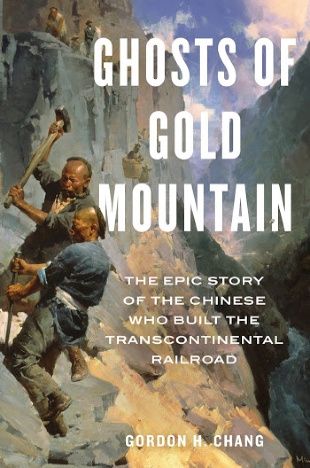The First Transcontinental Railroad connected the West Coast to the already existing railway system in Iowa. It transformed the country in many ways, replacing the Pony Express, wagon trains, and stagecoach lines that carried people and goods from the East and Midwest to the West. It also replaced the sea excursion from Eastern ports going around South America's tip and then journeying up to the California coast. With the railroad, travel across the country was reduced in time, cost, danger, and discomfort.
Gordon H. Chang, the Olive H. Palmer Professor in Humanities and professor of history at Stanford University, has written a bellwether history of the Chinese immigrants who came to America in 1864 and spent five years of heavy labor on this monumental project. As many as 1,200 of the 20,000 laborers lost their lives along the route. Drawing on archaeological findings, government and payroll records, ship manifests, photographs, and other data from American and Chinese archives, Chang brings to life the challenges these workers faced as they squared off against physical exhaustion, racism, poor pay, and worries about families and friends back in China. It is a story that has not been told in such depth before.
Chang pays tribute to these workers: "Recognition of their achievements is long overdue: their legacies should be honored and their spirits propitiated. The lost souls of those who died during the construction of the railroad, and the neglected lives and experiences of those who survived deserve nothing less. For while theirs is the story of ghosts past, in the present it is also an experience that resonates very much with the living. It is an epic story of dreams, courage, accomplishment, tragedy, and extraordinary determination."
